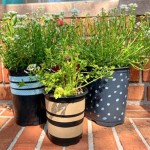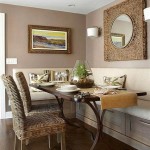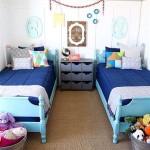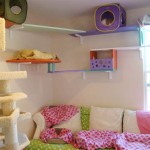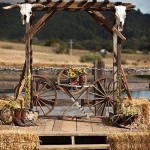```html
Dark Green Decor Ideas for a Sophisticated Interior
Dark green, encompassing shades from deep emerald to forest, offers a timeless and versatile palette for interior design. It evokes a sense of tranquility, sophistication, and connection to nature, making it an excellent choice for creating a stylish and inviting atmosphere. The following article provides a comprehensive guide to incorporating dark green into various aspects of home decor, presenting key design principles and practical application.
1. Choosing the Right Shade of Dark Green
The success of a dark green interior hinges on selecting the optimal hue for the specific space. Considerations should include the size and natural light levels. In smaller rooms or those with limited light, lighter shades of dark green, such as sage or olive, may be better suited. These colors reflect more light and can prevent the space from feeling overly enclosed. Conversely, larger rooms with abundant natural light can often accommodate deeper, richer shades like forest green or hunter green. These deeper tones add a sense of drama and luxury. Consider the undertones of the green as well. Some greens lean towards blue, creating a cooler, more serene feel, while others have yellow undertones, which can produce a warmer, more vibrant aesthetic. Test paint samples in the actual space under various lighting conditions to ensure the chosen shade complements existing furnishings and the overall design vision.
2. Coordinating Colors and Complementary Palettes
Dark green serves as a strong foundation for a variety of color palettes. Its inherent neutrality allows for seamless integration with other hues. The most classic combination is with warm neutrals, such as cream, beige, and taupe. This creates a balanced and elegant aesthetic, providing a sense of comfort and sophistication. Gold and brass accents can further enhance this pairing, adding touches of luxury and visual interest. Another effective approach is a monochromatic scheme, utilizing various shades of green throughout the space. This creates cohesion and depth, allowing the different tones to interplay and create a harmonious environment. For a bolder statement, dark green can be paired with jewel tones like deep blues, rich purples, or even accents of burnt orange. Consider the color wheel to help identify complementary colors. Red, although strong, is the direct complement to green and can be applied sparingly to create accents that really pop.
3. Utilizing Dark Green on Walls and Furniture
The application of dark green on walls can significantly transform a room's ambiance. For a bold statement, consider painting entire walls, or use it as an accent wall to draw attention to a specific architectural feature, such as a fireplace or an alcove. Wallpapers featuring dark green patterns, such as botanicals or geometric designs, provide an alternative way to introduce the color. When selecting furniture, dark green upholstery on sofas, armchairs, and ottomans provides a grounding element within a room. Textural elements, like velvet or linen, can add depth and visual interest to the furniture. Consider the style. A dark green velvet sofa in a room with gold accents creates a luxurious and sophisticated feel, while a dark green linen sofa in a room with natural wood tones evokes a more relaxed and organic aesthetic. This combination is perfect for any room.
4. Incorporating Dark Green Through Accessories and Textiles
Smaller applications, such as accessories and textiles, provide a means of introducing dark green without committing to larger changes. Throw pillows, blankets, and curtains in various shades of green create a sense of warmth and visual texture. Consider layering different patterns and textures to avoid monotony. Green curtains, in particular, can add a dramatic touch, framing views and controlling light levels. Art pieces, such as paintings or prints featuring green landscapes or abstract compositions, can serve as focal points and enhance the overall aesthetic. Decorative objects, such as vases, bowls, and sculptures, can further integrate the color, completing the look. The beauty in accessorizing with dark green is you can switch things out easily, making this the perfect option for any home.
5. Embracing Natural Elements and Biophilic Design
Dark green's inherent connection to nature makes it an ideal choice for incorporating biophilic design principles. Incorporating plants into a dark green interior enhances the connection to the natural world and improves air quality. Consider using a variety of plants, from tall floor plants, such as fiddle-leaf figs or snake plants, to smaller potted plants on shelves and tables. This contrast between the natural green of plants and the dark green decor creates a sense of visual interest and a connection to the outdoors. Natural materials, such as wood, stone, and rattan, further enhance the biophilic elements by bringing organic textures and tones into the space. These elements are excellent for creating a cohesive and calming environment. This is one of the most popular and effective uses of dark green.
6. Lighting Considerations
Lighting plays a crucial role in how dark green is perceived within a space. Natural light is ideal for revealing the subtleties of dark green shades, but artificial lighting becomes essential, particularly in the evenings. Layering different light sources, such as ambient lighting, task lighting, and accent lighting, creates depth and a more inviting atmosphere. Warm-toned light bulbs can enhance the richness of dark green hues, while cooler light can make the shade appear more vibrant. Consider the placement of lighting fixtures to highlight architectural features or specific design elements. Recessed lighting, track lighting, and pendant lights can all be utilized to create the desired effect. Dimmer switches provide added flexibility, allowing for adjustment of the light intensity to suit different activities and moods. Always test the lights with the paint color to make sure you get the desired feel.
7. Mixing Textures and Patterns
To prevent a dark green interior from appearing flat or one-dimensional, it is imperative to incorporate a variety of textures and patterns. Mixing textures, such as velvet, linen, wood, metal, and stone, adds depth and visual interest. Consider incorporating patterns on textiles, such as rugs, throw pillows, and curtains. Geometric prints, floral patterns, and animal prints all complement dark green. Employing a combination of these elements creates a sophisticated and visually complex space. Careful consideration of scale is also crucial. Balance large-scale patterns with smaller, more subtle details. This interplay of textures and patterns prevents the space from feeling visually overwhelming and ensures a cohesive design.
```
Modern Living Room Black And Green Theme Dark Rooms Home Decor Interior Design

Dark Green Color Trend Living Room Decor Rooms

Dark Green Design Dreamy Rooms Spaces Firefly Finch

Dark Walls With Green And Pink Velvet Sofas A Beautiful Feel In This Living Room Space Eclectic Bedroom Interiors Decor

My Green Living Room With Dark Paint Bigger Than The Three Of Us

25 Welcoming Green Living Room Decor Ideas Shelterness

52 Interiors Dark Green Walls Ideas House Interior Design

How To Use Dark Green In Your Living Room

Dark Green Design Dreamy Rooms Spaces Firefly Finch

Green Living Room Design For All Home Décor Styles Beautiful Homes
Related Posts
